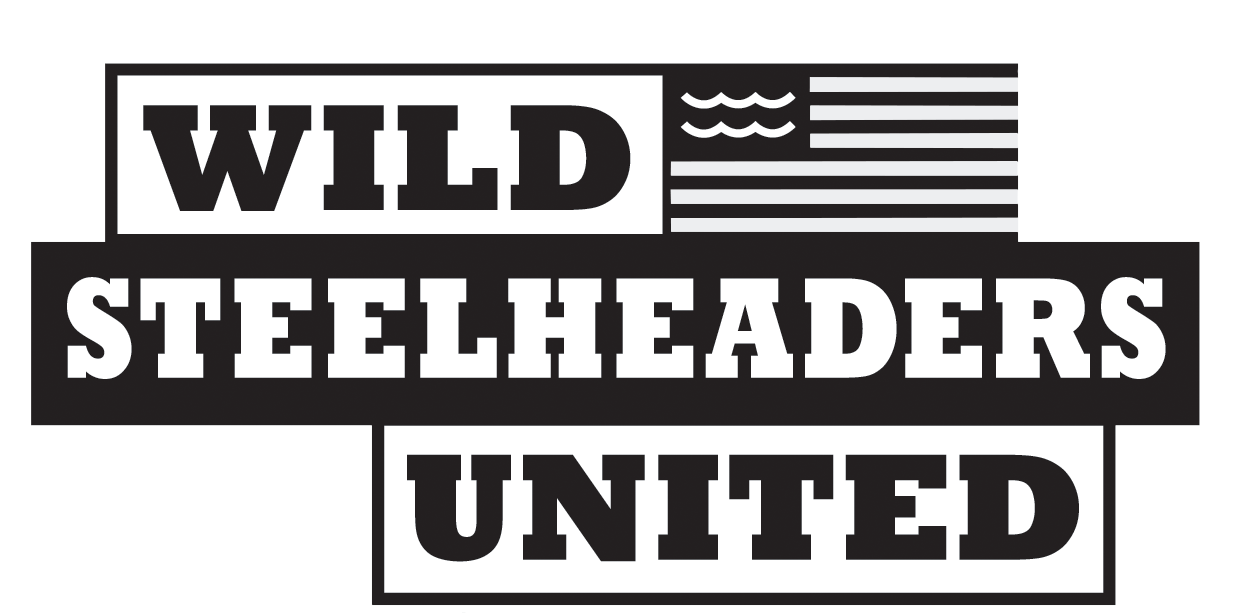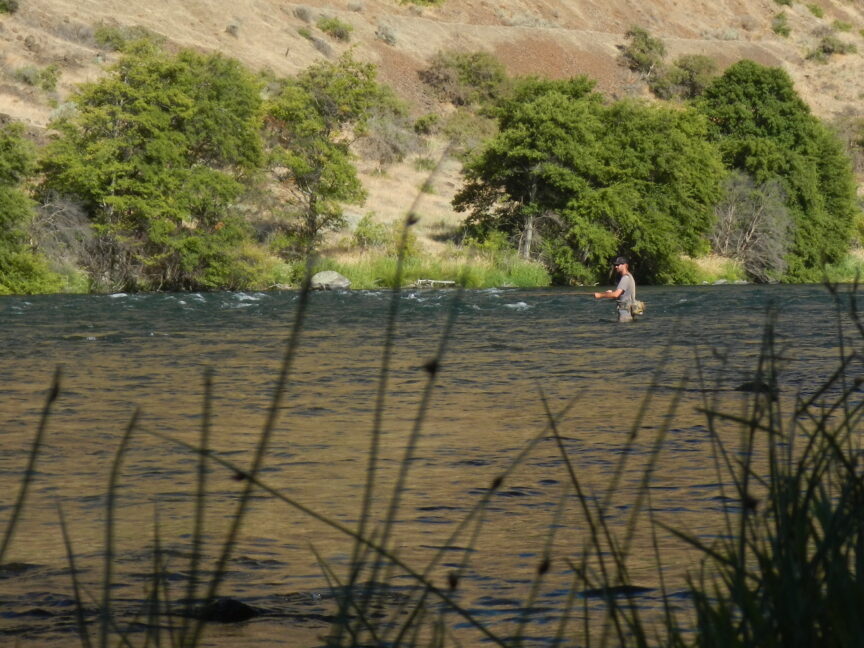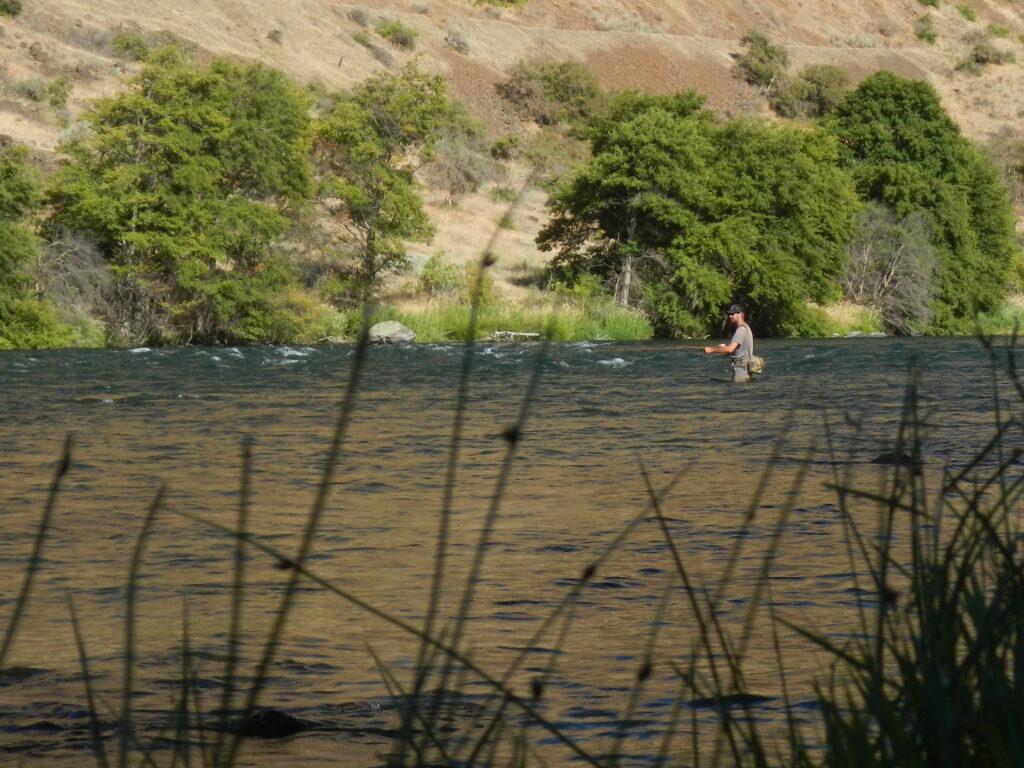
In a recent letter to Oregon’s Environmental Quality Commission, TU is advocating for scientifically informed hydropower management to benefit water quality in the lower river and support anadromous fish reintroduction upstream.
The Deschutes River is one of Oregon’s most beloved and heavily utilized watersheds. The basin is home to key populations of Bull Trout, Chinook Salmon, Pacific Lamprey, and especially renowned for its iconic Redband trout and summer steelhead fisheries. It provides water for the fastest growing urban area in the state and irrigation to thousands of acres of productive farmland. The Pelton Round Butte Project near Madras produces electricity used across the region.
Like many Columbia Basin tributaries, coldwater fish species in the Deschutes watershed have declined dramatically over the past century due to losses of habitat, connectivity, and water quality. The growing impacts of climate change, the arrival of invasive warmwater fish, outdated hatchery practices, and continuing population growth compound the historic impacts.
Despite these challenges, we’re inspired by the resilience of these species and know that smart, collaborative, science-based management can rebuild populations of native fish, reintroduce anadromous fish to historic habitat, protect and improve water quality and serve the communities that depend on healthy fish and clean water.
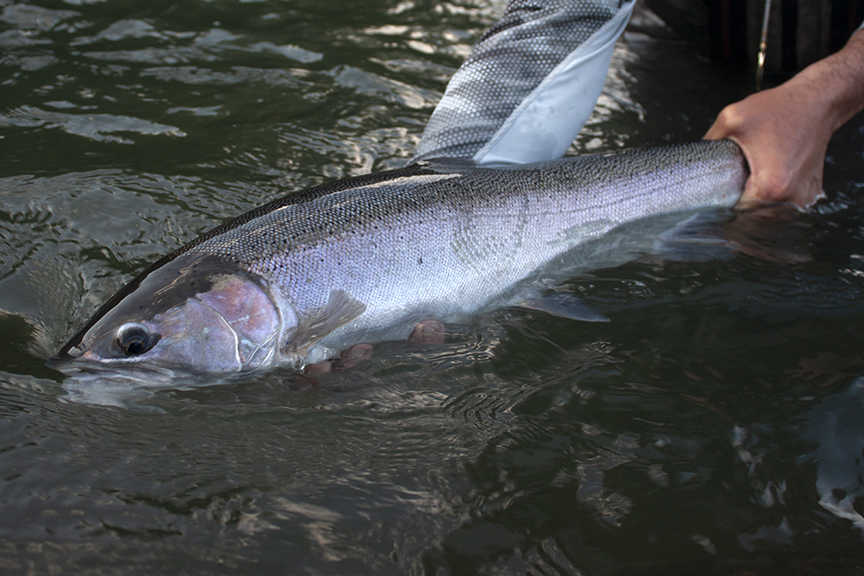
Above: Deschutes River summer steelhead. Image: Greg Fitz
The Deschutes River is one of Trout Unlimited’s Priority Waters, and our staff and grassroots members (including the Deschutes Redbands Chapter of TU) are deeply committed to a brighter future for the basin. Our work and advocacy spans the upper and lower portions of the watershed and focuses on four broad efforts:
- Habitat restoration in key tributaries
- Improved water quality entering Lake Billy Chinook
- Science-based adaptive management strategies for Pelton Round Butte operations that result in a successful long-term fish reintroduction effort while also protecting water quality and coldwater fish in the lower Deschutes River
- Engagement and partnerships with local communities
As a part of this ongoing work in the basin, TU recently submitted a letter to Oregon’s Environmental Quality Commission advocating for scientifically informed hydropower management to benefit water quality in the lower river and support anadromous fish reintroduction upstream.
In our letter, we advocated that the Commission support and prioritize the Oregon Department of Environmental Quality’s (ODEQ) review of the Pelton Round Butte Project’s existing state 401 certification and Water Quality Monitoring and Management Plan. Our letter also highlighted TU’s continued belief that anadromous fish reintroduction above the Project is of profound ecological and cultural importance, and that Project operations need to be informed by the most robust and up-to-date science available and not jeopardize water quality or coldwater fish in the lower river. We are committed to working pragmatically with partners to see the vision of healthy water quality and coldwater fish above and below the Project through to fruition.
Shortly afterwards, groups including Deschutes River Alliance, Center for Biological Diversity, Native Fish Society, Association of Northwest Steelheaders, Sierra Club of Oregon, and the Wild Steelhead Coalition submitted a letter regarding similar topics to the Oregon Governor’s Office. (Read DEQ’s letter to the Governor here, responding to letters from TU and other groups.)

Image: James Fraser
Pelton Round Butte Hydroelectric Project
Some of the most nuanced challenges facing coldwater fish in the Deschutes are the impacts driven by the Pelton Round Butte hydroelectric project. The Project, which consists of three run-of-river dams built in the 1950s and 1960s, extirpated populations of Pacific Lamprey, summer steelhead, spring Chinook, fall Chinook, and sockeye from historic habitat in the upper watershed.
The construction of Round Butte dam created Lake Billy Chinook, a large reservoir which submerged the confluence of the Metolius River, Deschutes River, and Crooked River under 400 feet of water. Fueled by stagnant water, nutrient loading, and abundant sunshine, nuisance algae blooms are an every-year occurrence in Lake Billy Chinook.
In 2004, the Project received an updated Federal Energy Regulatory Commission (FERC) license to continue hydropower operations for the next fifty years. As part of the relicensing agreement, the co-Licensees of the Project (i.e., Portland General Electric and the Confederated Tribes of the Warm Springs Reservation of Oregon [CTWS]) were required to restore fish passage above the dams.
With attempts at a fish ladder long abandoned, a “trap and haul” program was initiated where adult fish would be collected below the Reregulating dam and then hauled up 500 feet in elevation to Lake Billy Chinook and released to spawn in its tributaries. To complement this natural production, a hatchery program would stock and acclimate summer steelhead and spring Chinook juveniles into tributaries of Lake Billy Chinook. Out-migrating hatchery and naturally produced smolts would be collected in the forebay of the reservoir and then trucked and released downstream of the dams (“Anadromous Fish In the Upper Deschutes River Sub-basin, Oregon Edition 1: Spring Chinook Salmon and Summer Steelhead” October 2008; authored by ODFW and the Confederated Tribes of the Warm Springs Reservation of Oregon).
A second goal of the Project relicensing was to restore the water temperature regime in the lower Deschutes River to conditions modeled without the dam complex in place.
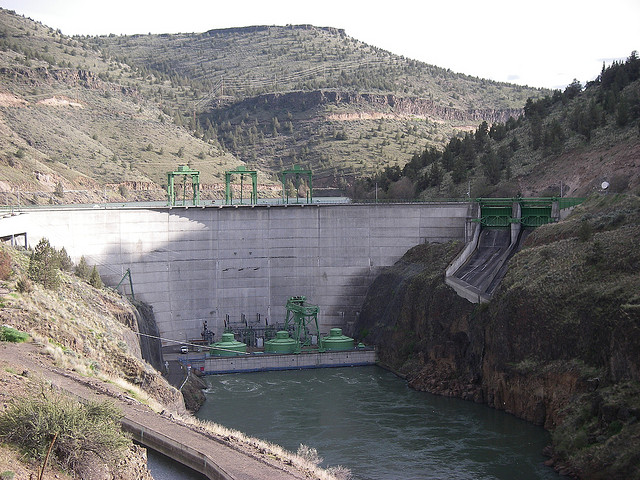
Credit: U.S. Forest Service
Originally, Round Butte Dam released water drawn entirely from the bottom of Lake Billy Chinook. Like many tailwaters, this shifted the lower Deschutes River to an artificial temperature regime that was colder in the spring and warmer in the fall than it would have otherwise been.
It is also important to remember that before the Project was relicensed, some reaches of the lower Deschutes River were already listed as impaired for pH, temperature, and dissolved oxygen.
Water temperature is an incredibly important driver of river ecology, affecting almost every aspect of the life cycle of coldwater fish including spawning timing, egg development, juvenile growth and rearing, migration timing, and habitat availability. Returning the lower Deschutes to a more natural temperature regime was expected to improve many of these parameters for salmon, steelhead, and resident trout.
To accomplish the Project’s fish reintroduction and water quality objectives, a Selective Water Withdrawal (SWW) tower was constructed in the forebay of Lake Billy Chinook. The SWW tower mixes water from the top and bottom of the reservoir. Drawing water from the top of the reservoir creates an attractant current which facilitates collection of out-migrating juvenile salmonids. Water mixing also gives Project operators the ability to match water temperature in the lower Deschutes to incoming water temperature from Lake Billy Chinook’s three tributaries. (The Crooked, Deschutes and Metolius Rivers.)
To date, the operation of the SWW tower has not led to the degree of ecological success anticipated in the relicensing agreement.
While the temperature regime has shifted to more natural conditions (i.e., warmer in the spring and cooler in the early fall), releasing nutrient-rich water from the top of Lake Billy Chinook has increased levels of pH, algae, and nutrients in the lower Deschutes River. Further, twenty years after relicensing, the fish reintroduction efforts above Pelton Round Butte have fallen short of the original goals. Returns of summer steelhead and spring Chinook reared above the Project have been low, typically less than 100 individuals, respectively, which is an order of magnitude below modeled predictions of around 1,000 adults annually (See Figure 18 and Table 11 in Pelton Round Butte Project (FERC No. 2030) 2023 Fish Passage Annual Report).
Concurrently, the larger Columbia Basin has experienced record low returns of anadromous fish over the past decade. While the factors that have contributed to the broad poor returns are certainly not helping the Project’s fish reintroduction effort, the persistent inefficiency of smolt collection remains a challenge. Measured smolt collection efficiency at the SWW tower, typically less than 30% for steelhead, remains well below the target of >75%.
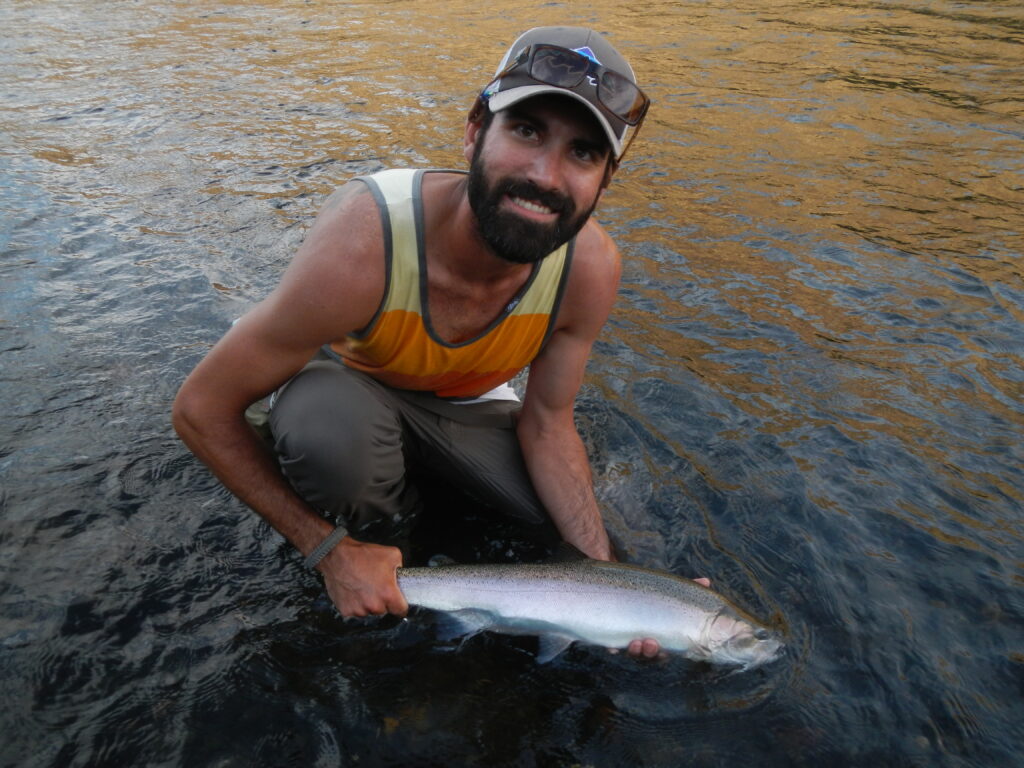
Image: James Fraser
However, the recent 2024/2025 run of summer steelhead has been a notable exception, with over 675 reintroduction adults collected at the Pelton trap for release into the upper watershed as of the end of February 2025 (plus about 275 excess hatchery broodstock also released upstream of the Project). This improvement in adult return numbers is great news and, hopefully, a positive sign that the past several years of better ocean conditions combined with the incremental improvements to the fish reintroduction effort over the past 15 years will help lead to increased numbers of adult summer steelhead and spring Chinook returning to the Upper Basin.
TU’s Continued Commitment to Improving Project Operations
TU is a signatory to the Project’s 2004 settlement agreement and remains steadfast in our responsibility of seeing its ecological goals achieved.
TU believes in the ecological and cultural importance of establishing anadromous runs into the Upper Deschutes Basin. In our view, the reintroduction program is an important and long-term effort—especially given population trends in other mid-Columbia anadromous runs. We’re encouraged by recent summer steelhead returns and believe it’s worth exploring operational changes, within the terms of the controlling Project license, that might improve performance of the fish reintroduction effort and water quality conditions in the lower Deschutes River. Over the next year, TU is focused on two main strategies to make progress in achieving the ecological goals of the settlement agreement: (1) improve water quality entering Lake Billy Chinook and released by the Project to the lower Deschutes River and (2) inform ongoing adaptive management of SWW tower operations.
Goal 1: Improving Water Quality
Review of the Project’s 401 Certification
Section 401 of the Clean Water Act plays a critical role in regulating water quality impacts from hydropower projects by requiring state and tribal certification before federal licenses are issued.
The Project has existing 401 certifications from ODEQ and the CTWS Water Control Board (WCB), but for years there have been calls to review and potentially modify those certifications (and the associated Water Quality Monitoring and Management Plan) considering lessons learned from 15 years of SWW tower operations and its effects on water quality and fish reintroduction.
TU applauds ODEQ for including a review of the Project’s existing 401 certification as part of its 2025-2027 Water Quality Program Plan and we look forward to continuing to engage in that effort to ensure a modified 401 certification is highly protective of coldwater aquatic life in the lower Deschutes River, is consistent with all current ODEQ and WCB standards, and facilitates fish reintroduction activities.
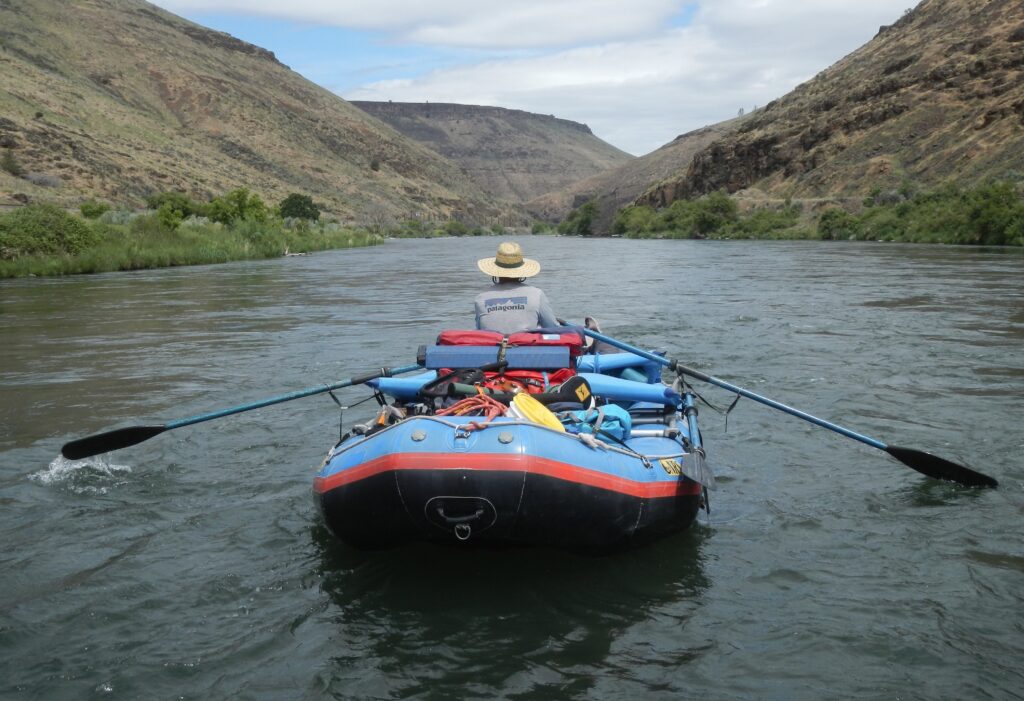
Image: James Fraser
Reduce Nutrient Loads in the Crooked River
Improving water quality in the lower Deschutes River requires a watershed-scale view of sources and causes of impaired conditions. TU is focused on improving water quality conditions entering Lake Billy Chinook to reduce algae blooms in the lake itself and, consequently, nutrients released downstream of the Project.
Following recommendations from an ambitious three-year water quality study, TU is working on reducing elevated nutrient loading (i.e., phosphorus and nitrogen) from the Crooked River, the largest contributor of nutrients to Lake Billy Chinook. To that end, TU is an active member of the Crooked River Water Quality Partnership and is supporting scientifically sound efforts to identify and prioritize nutrient-reducing projects and monitor baseline conditions.
TU applauds the significant investments made by the Pelton Fund, Crooked River Water Quality Partnership, and others to improve water quality in the Crooked and elsewhere in the Upper Deschutes Basin.
Goal 2: Adaptive Management of the SWW Tower
Before the SWW tower was constructed the Project released water from the bottom of the reservoir, resulting in an artificial temperature regime with the lower river colder in the spring and warmer in the fall. A major objective of the SWW tower was to shift the temperature regime to more natural conditions aligned with likely historical regimes.
However, the blending of relatively nutrient-rich water from the surface of Lake Billy Chinook has resulted in additional, unintended changes in lower river water quality including higher levels of pH, algae, and nutrients. Warmer air temperatures and recent drought fueled by climate change are likely contributing to the increase in lower river algae and pH as well.
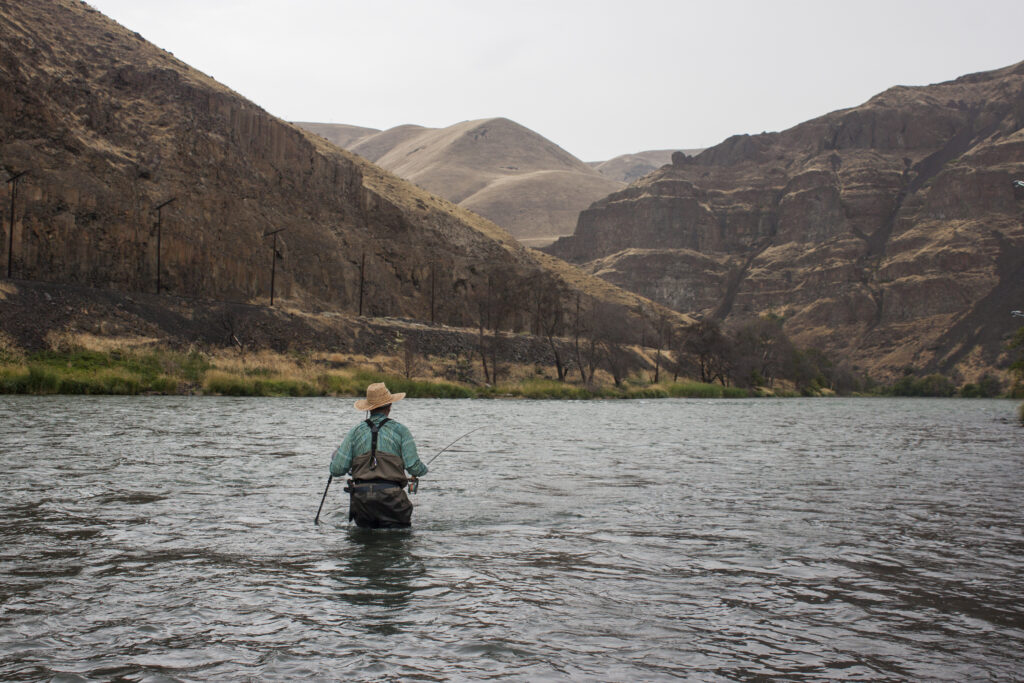
Image: Greg Fitz
With that context in mind, there are two main questions that TU and other project partners are working to answer regarding post-SWW changes to lower river water quality and the effect on coldwater fish:
- Is the increase in spring water temperature resulting in increased growth rates in juvenile steelhead and Chinook?
- Does releasing a higher proportion of bottom water from Lake Billy Chinook improve water quality conditions in the lower Deschutes River while also achieving fish reintroduction goals?
Answering these questions and others that assess how changes in lower Deschutes River water quality conditions affect coldwater fish are critically important for identifying how the SWW tower can be used to improve outcomes given the status of the heavily modified Deschutes Basin.
Looking Ahead
The Deschutes is a huge basin that requires, and deserves, watershed-scale solutions to improve and protect water quality, reconnect and restore critical fish habitat, mitigate the growing impacts of climate change, and support thriving communities. TU’s work and advocacy in the upper and lower portions of the watershed are ongoing, long-term commitments.
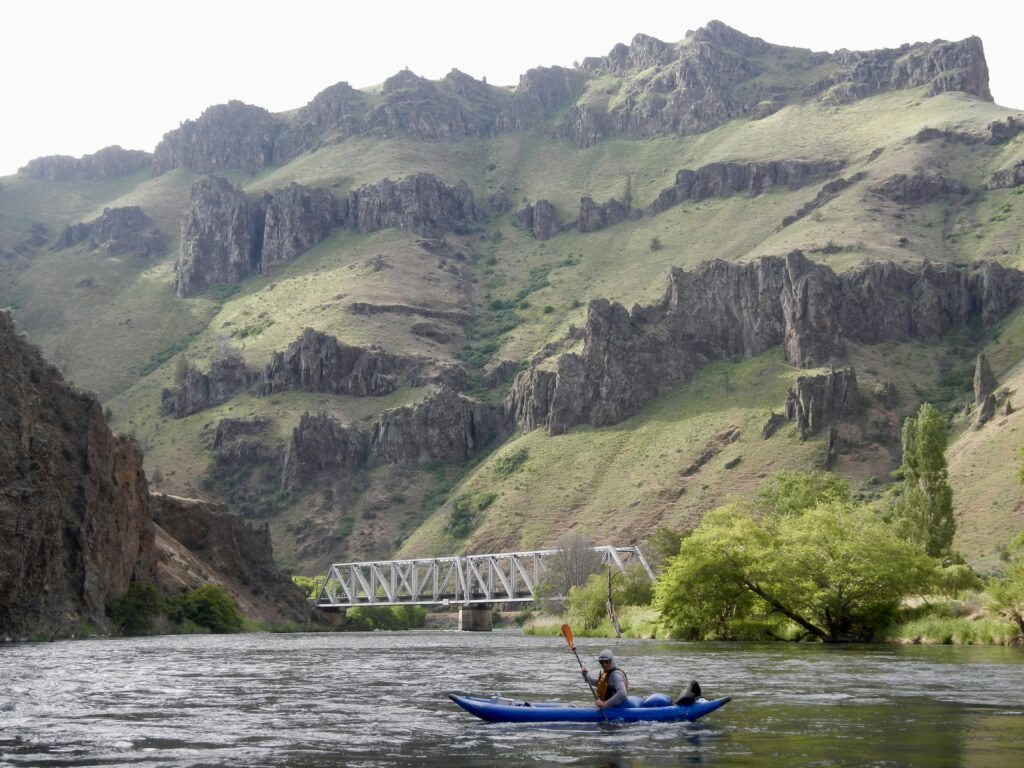
Image: James Fraser
In a basin with such diverse stakeholders and communities, collaboration and partnerships are key to building durable solutions. We’re optimistic about the future of the Deschutes. We share a vision of a watershed where anadromous and resident fish populations are healthy and utilizing historic habitat; the water is cold, clean and being shared equitably; and the economies that depend on both are thriving.
We are committed to the work on the ground and the advocacy for science-based management that will make this vision possible.
